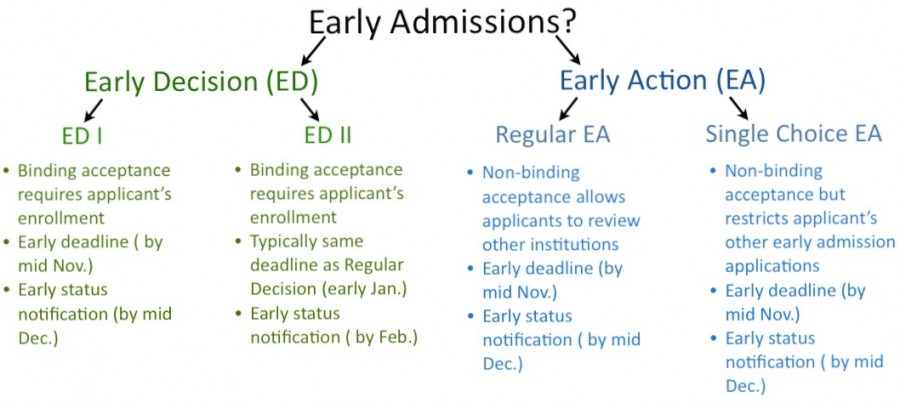Wait, Isn’t January Early Enough? Tackling the Early Application Process
October 19, 2015
With the recent College View, post-PSAT Mississippi State University visits, and college applications looming on the horizon for seniors, the words “Early Action,” “Early Decision” and “I don’t know” have been floating around the MSMS student body. While confusion abounds, actual decisiveness on the decision between application pathways is scarce.
Under the “Facilitating the Application Process” section of College Boards’ College Guidance collection, Early Decision (ED) is defined as “binding” while Early Action (EA) is “non-binding.” Both application processes typically require that the applicant apply to only that institution during the early admission process. Most students understand this defining characteristic, but are still unsure about which process, if either, would be beneficial to their college application.
According to College Board, both “plans can be beneficial to students—but only to those who have thought through their college options carefully and have a clear preference for one institution.” Financial circumstances are also an important factor in deciding between the numerous available application process.
The reasoning behind this caveat of early admission processes is more obvious for ED applicants because financial aid offers are released simultaneously with admission notification. For students without the means to afford tuition even with their financial aid offer, the binding feature of ED presents a legal and financial burden. To evade enrollment in an institution without the resources for proper payment, accepted ED applicants must thoroughly prove financial inability.
For the non-binding EA, preference towards the institution is a more important factor than financial circumstances. “Denied” or “deferred” status notifications are both a dreaded thought and potential disaster for some; EA applicants not admitted might face possible time constraints in regular decision applications to other colleges. Early applicants are notified of their admission status typically from mid Dec. to Jan., leaving less than a month until the early Jan. regular decision deadlines, creating the potential for a hectic Christmas break.
While ED and EA both appear to hold mostly horror and heartbreak, both early application plans hold potential for some college applicants. For those who are thoroughly interested in attending one institution and knowledgable about their financial circumstances, either form of early application can offer a way to save stress, time and money by eliminating multiple applications.
Within both ED and EA processes, there are numerous different application plans including ED I, ED II, Single-Choice EA and Restrictive EA. ED I and ED II are two plans following early decision criteria that are distinguishable only by the deadline and notification date. Both Single-Choice EA and Restrictive EA place some barriers around other applications a student might be interested in submitting; typically, students may only apply to non-binding public universities along with their EA first-choice school. With slight differences separating each institution and its varied application processes, fine print is an important aspect of college applications.
In my personal circumstance, EA is an easy choice with mostly advantageous characteristics. My “dream school” offers Single-Choice EA, which only restricts binding applications to other private universities. For me, EA offers the opportunity to save numerous application fees to other institutions and a quick notification of admission status. After the quick notification, I will have more than five months to make a final decision, removing some of the stress of college decisions. While the Nov. 1 application deadline is daunting, the possible advantages outweigh the hassle.
When making your personal decision on early application processes, carefully reviewing both the institution’s fine print about the restrictions of a potentially binding admission and your personal situation is very important. To decide between ED, EA, regular decision and the countless varieties of each application process, you should use various resources from the MSMS counseling office to admissions officers at your top choice university. With two weeks until Nov. 1, a common ED or EA deadline, some other MSMS seniors might also be willing to share their personal decisions towards early application plans.









